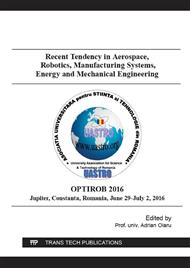p.260
p.266
p.272
p.278
p.286
p.292
p.298
p.303
p.309
On the Variation of the Polytropic Exponent in a High Pressure Fan Impeller
Abstract:
Fan impellers are usually designed considering that the pumped air is incompressible and homogeneous, i.e. its density remains constant. When the incompressibility hypothesis can lead to significant errors, as in the case of high pressure fans, the analysis of the air flow can be made by considering that the air undergoes a polytropic process of constant polytropic exponent. In this paper, the concept of polytropic process of variable exponent depending on impeller radius is introduced, in order to better approximate the phenomena that take place inside blade passages. Numerical results obtained for an impeller of a high pressure fan without spiral casing suggest that the pumped air undergoes two different processes: an expansion in the first part of the impeller and the usual compression in the second part. The two processes are reflected in the strong variation of the polytropic exponent, which shows a vertical asymptote where the change of the process takes place. The results also suggest that high pressure fan impellers could consist of two stages, each stage being designed according to the process that takes place inside it: expansion or compression.
Info:
Periodical:
Pages:
286-291
Citation:
Online since:
June 2016
Authors:
Keywords:
Price:
Сopyright:
© 2016 Trans Tech Publications Ltd. All Rights Reserved
Share:
Citation:


